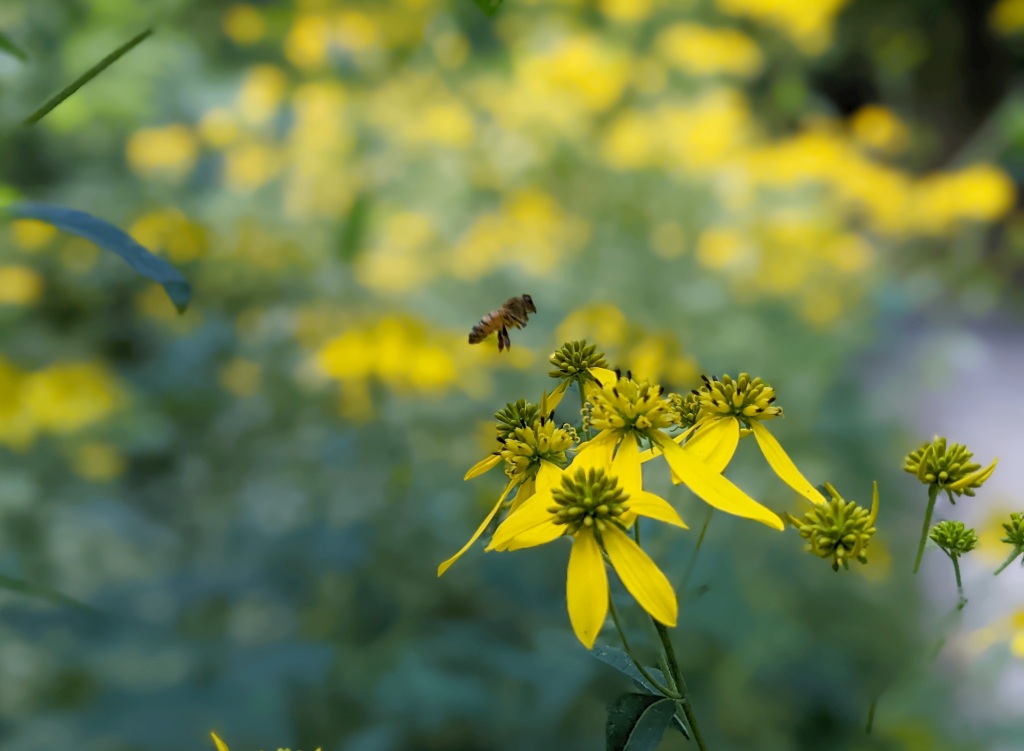
17 September 2022
In Schenley and Frick Parks you can look straight through the forest if you duck your head below four feet high. In Schenley Park the ground is often bare and most plants in that four-foot zone are gone. But one flower, wingstem (Verbesina alternifolia), is doing just fine in the city parks.
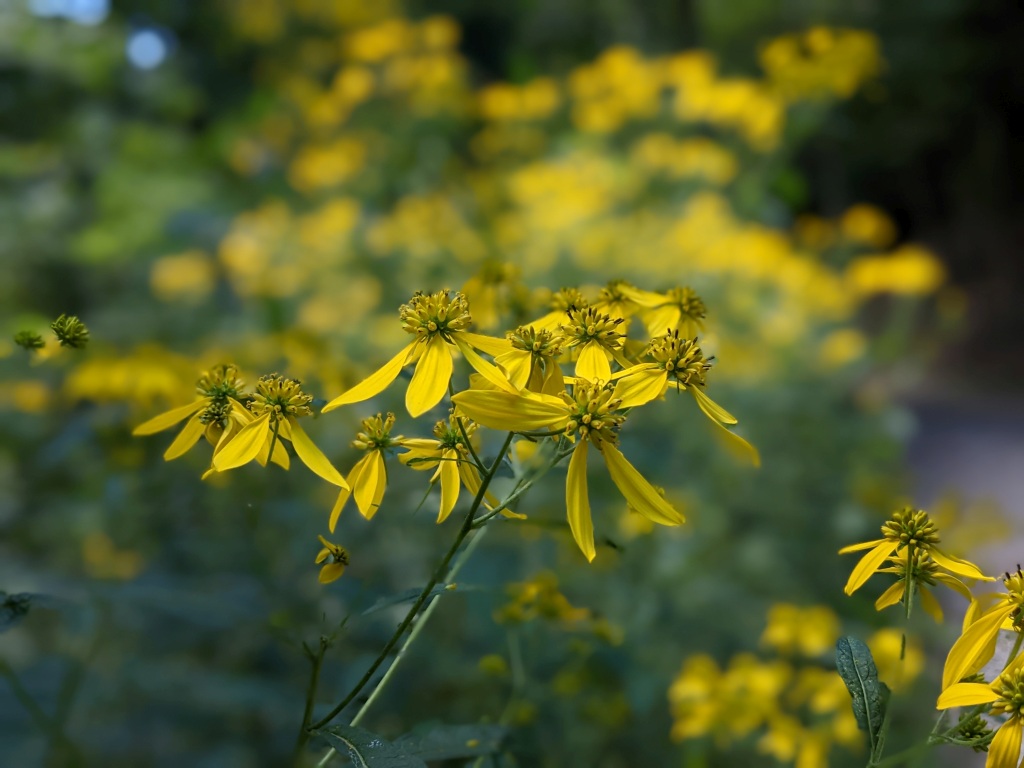
The absence of cover from the ground to 4 – 5 feet is called a browseline (below) and is evidence of an overpopulation of white-tailed deer.
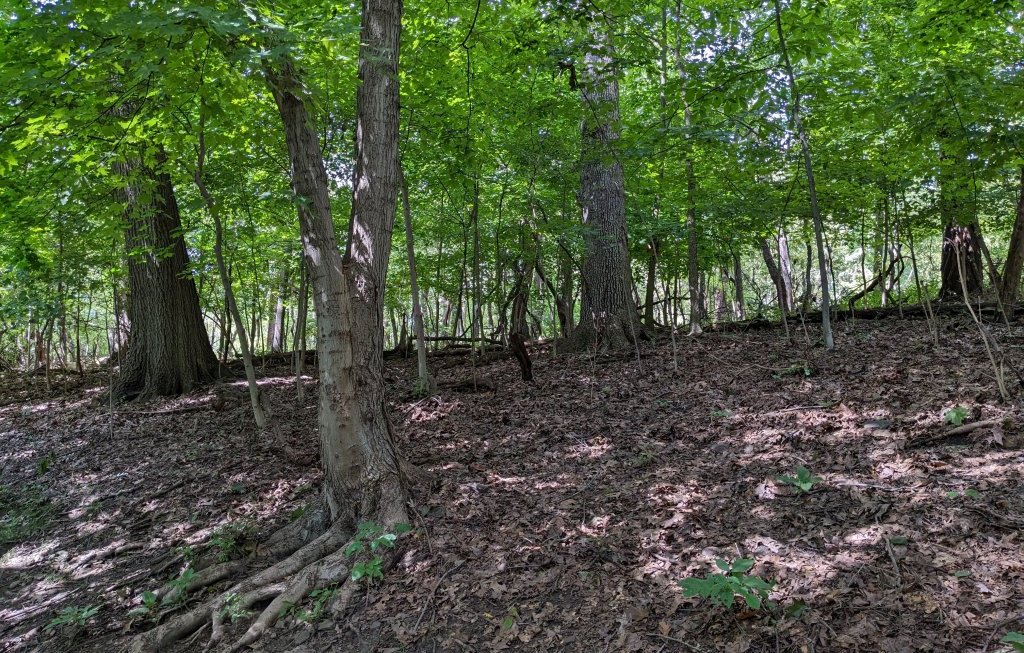
According to this KDKA report, the deer population in Schenley Park is estimated at 80-120 per acre, which roughly equates to 57-86 deer per square mile. A 2010 deer study for City Parks found that the parks can support 7-8 deer per square mile, but with 8 to 11 times that number living in Schenley any plant still growing there is definitely something deer don’t eat.
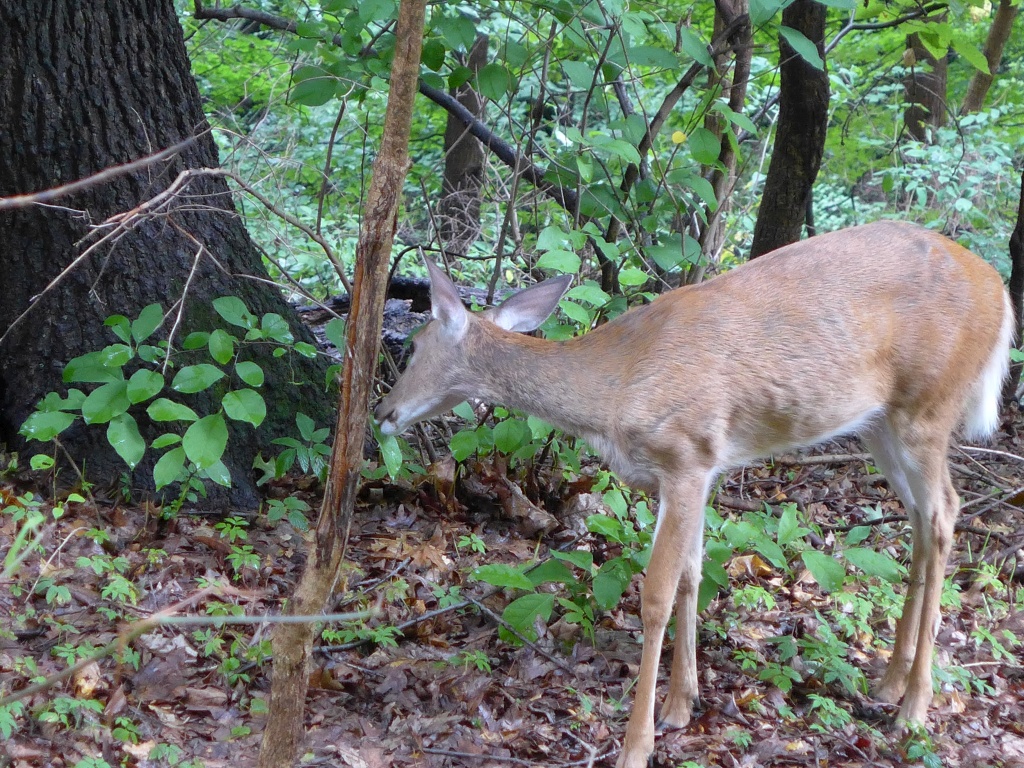
So why don’t deer eat wingstem?
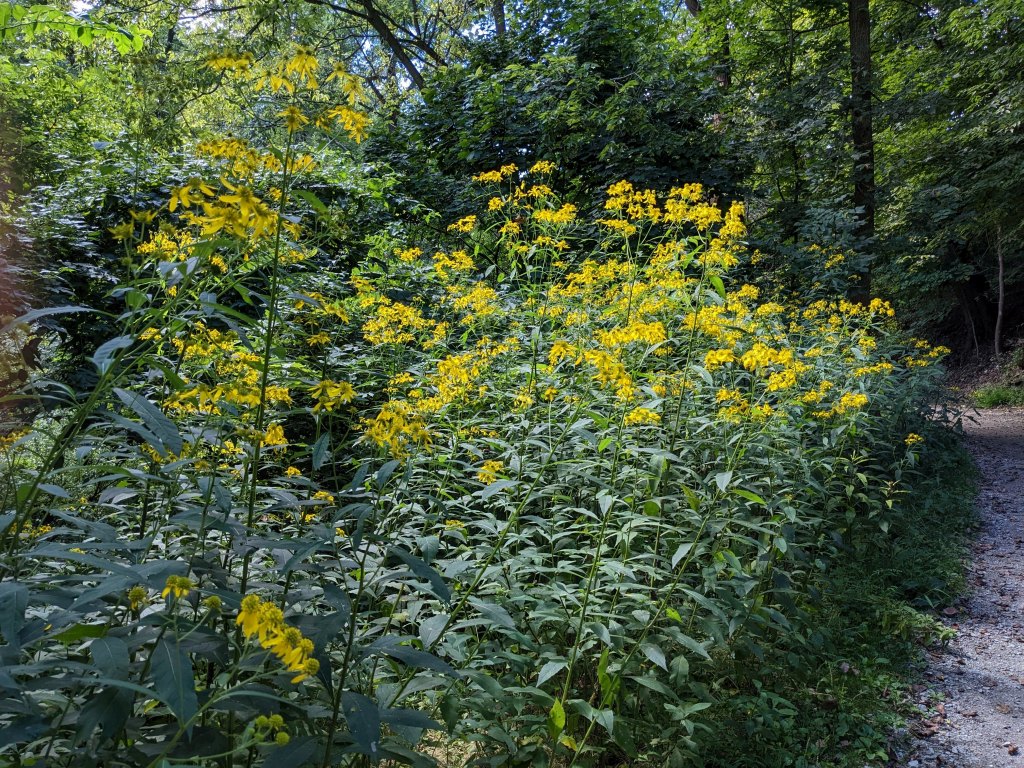
The leaves are bitter!
Find out more about wingstem at Illinois wildflowers.
(photos by Kate St. John)
That explains why I still have wingstem In my yard. They ate everything else. They must not like snake root, either. I have that too. Two fall flowers for the pollinators.